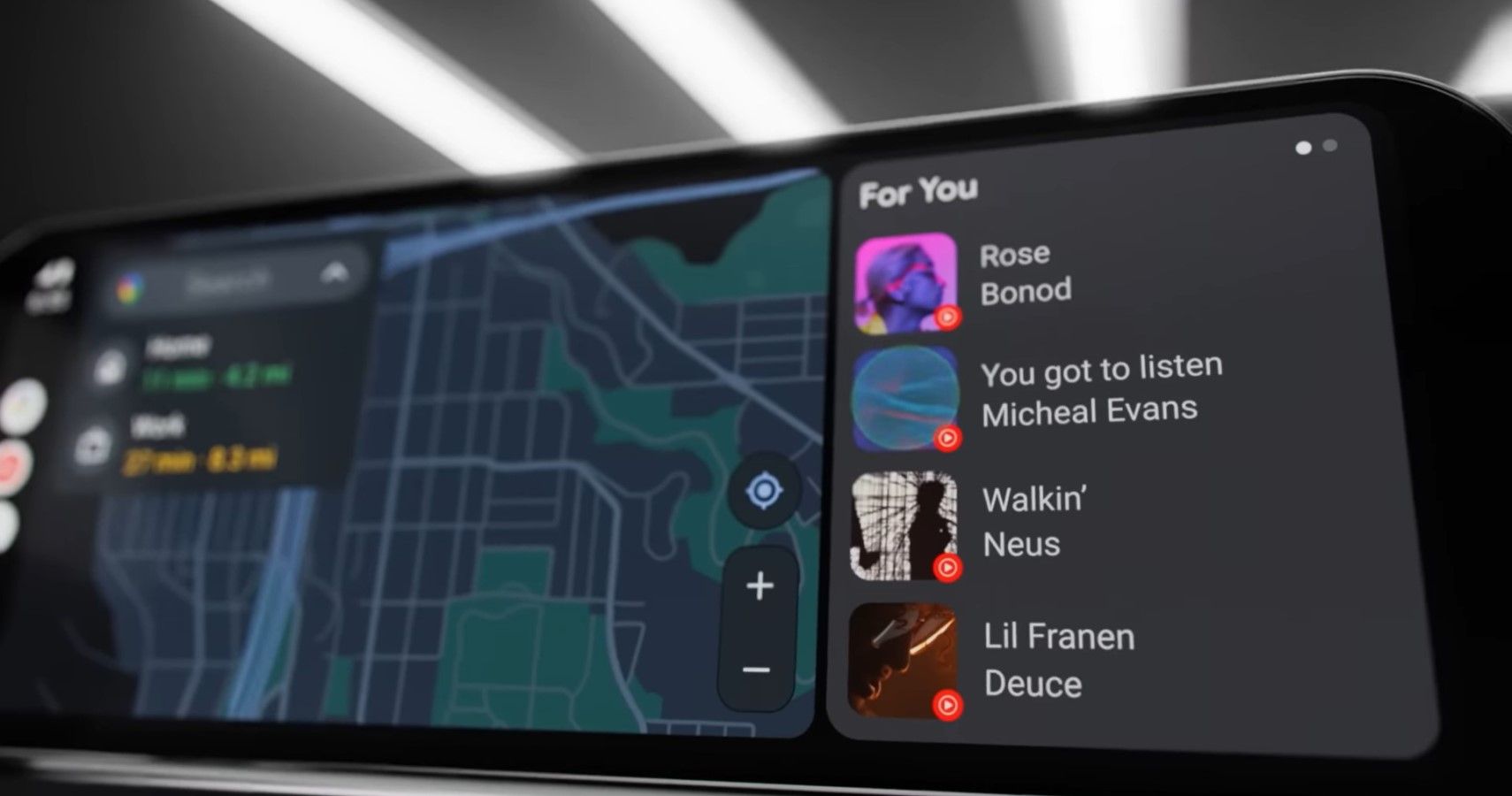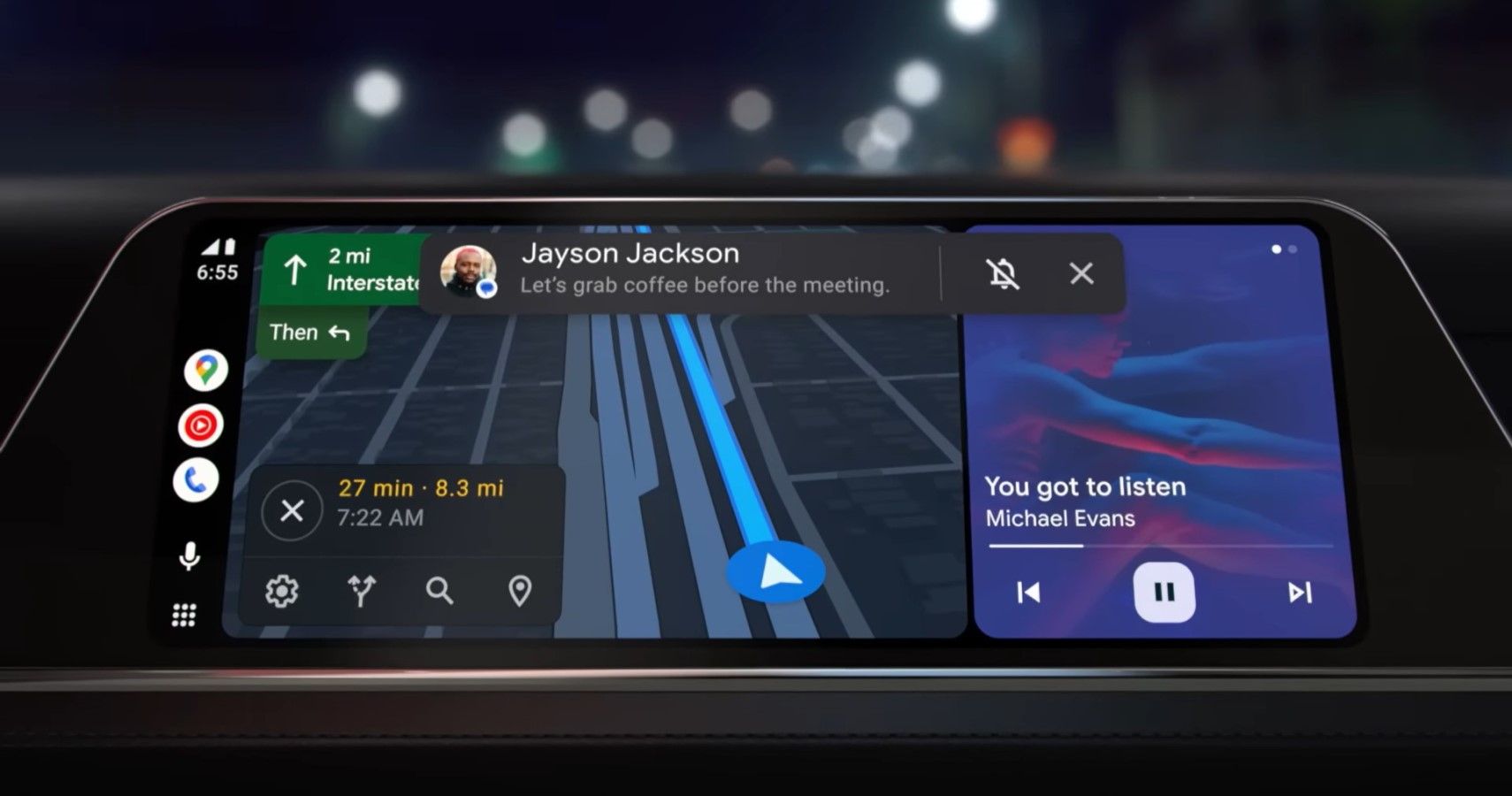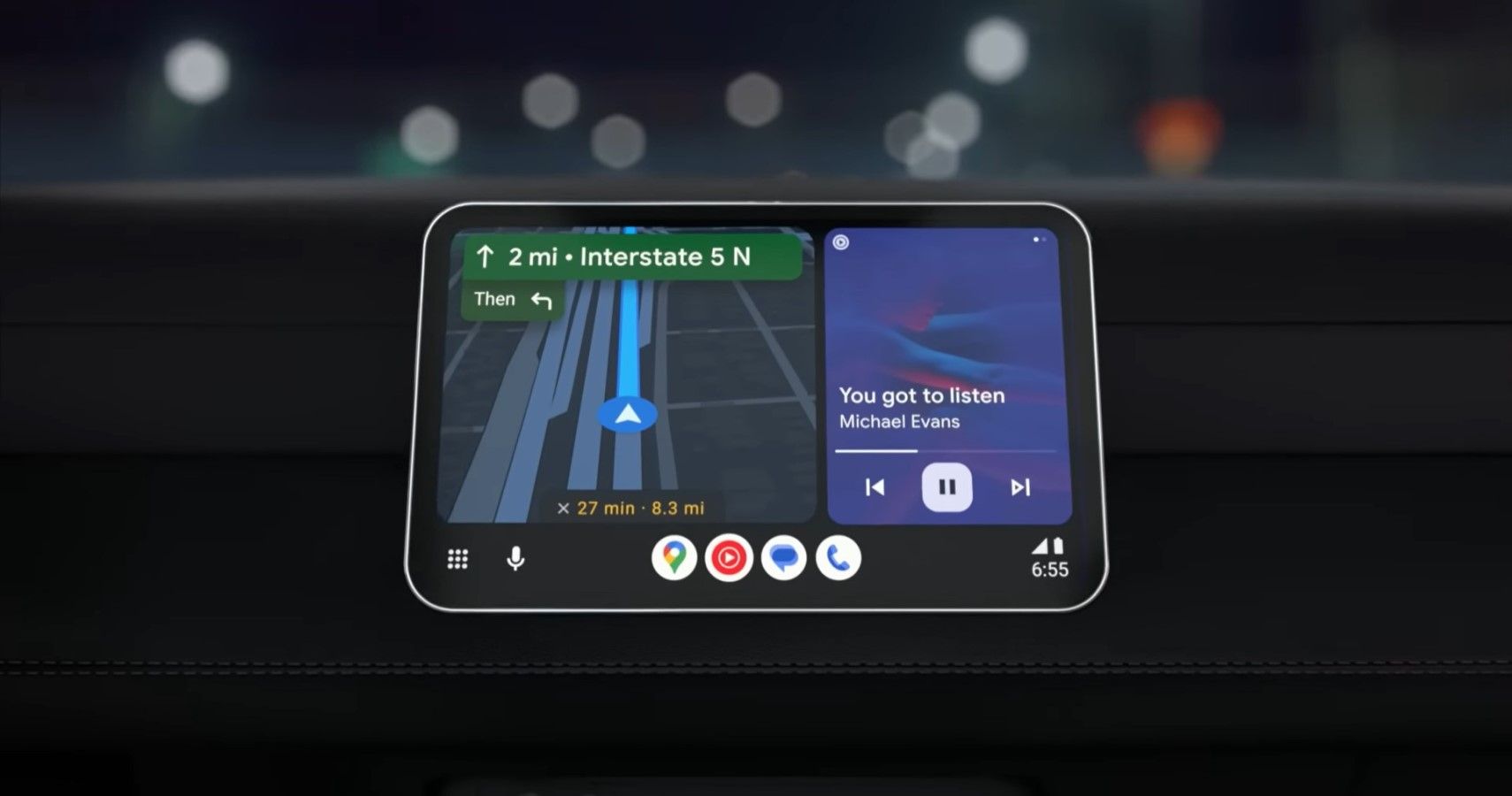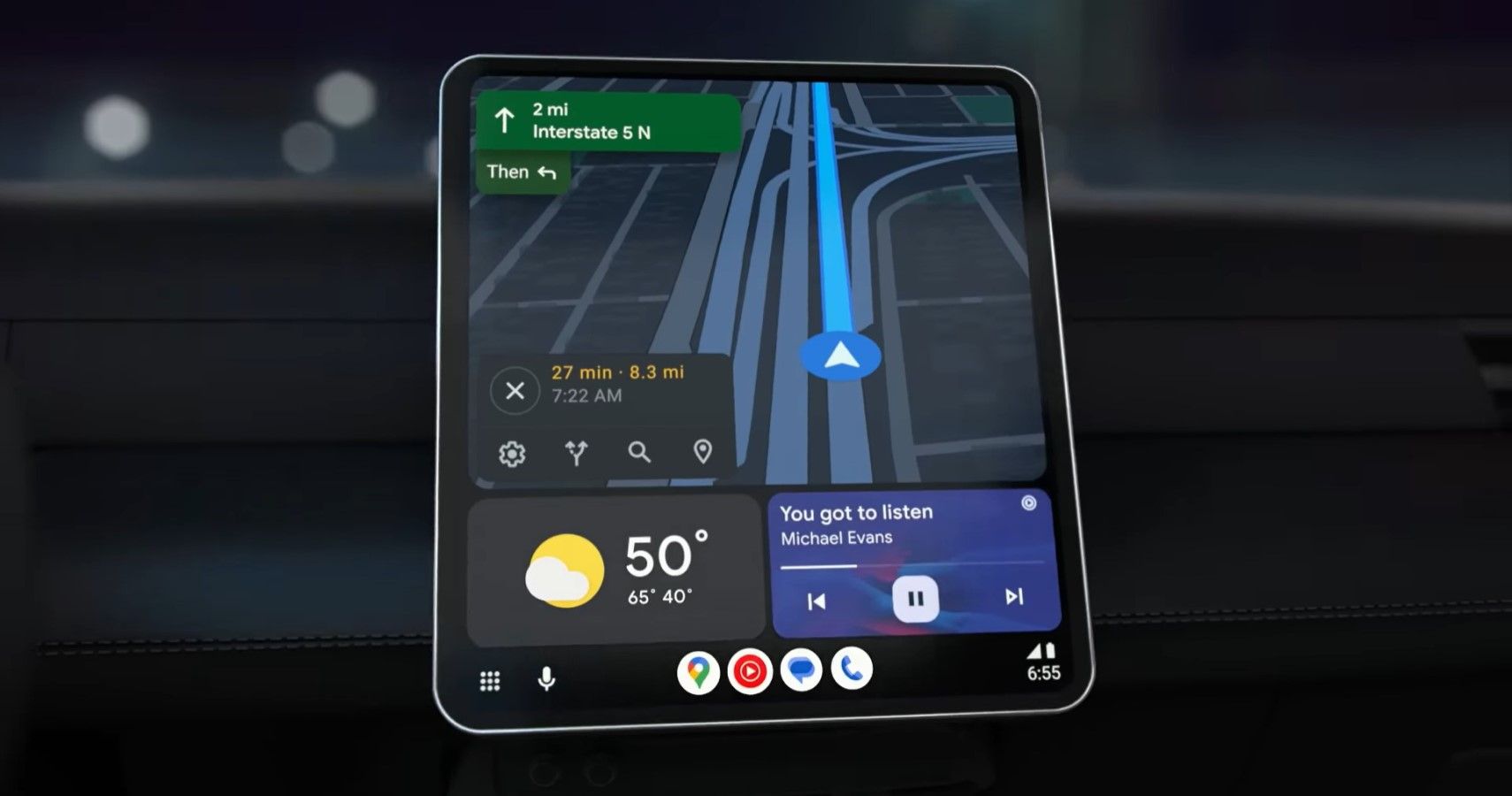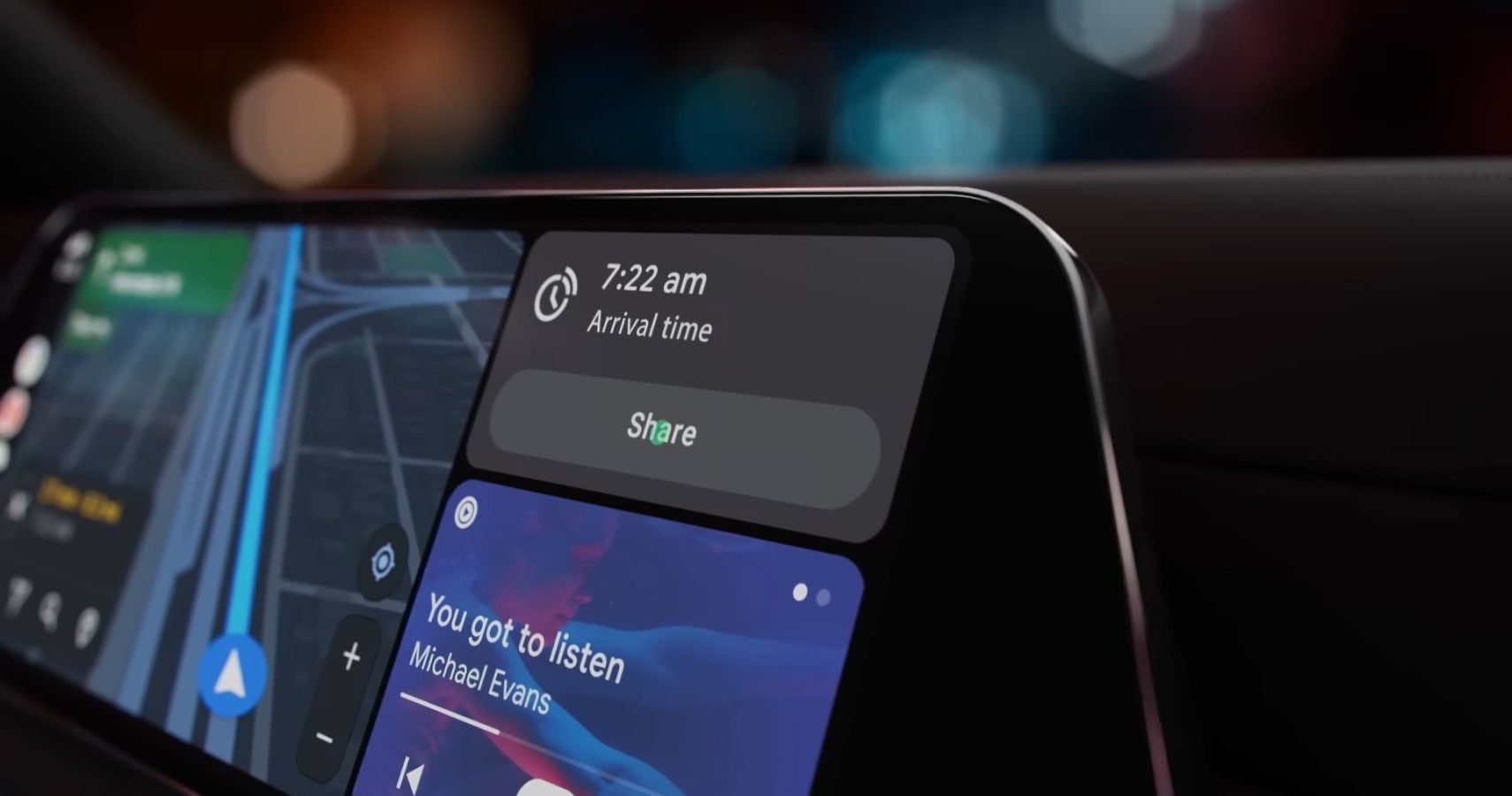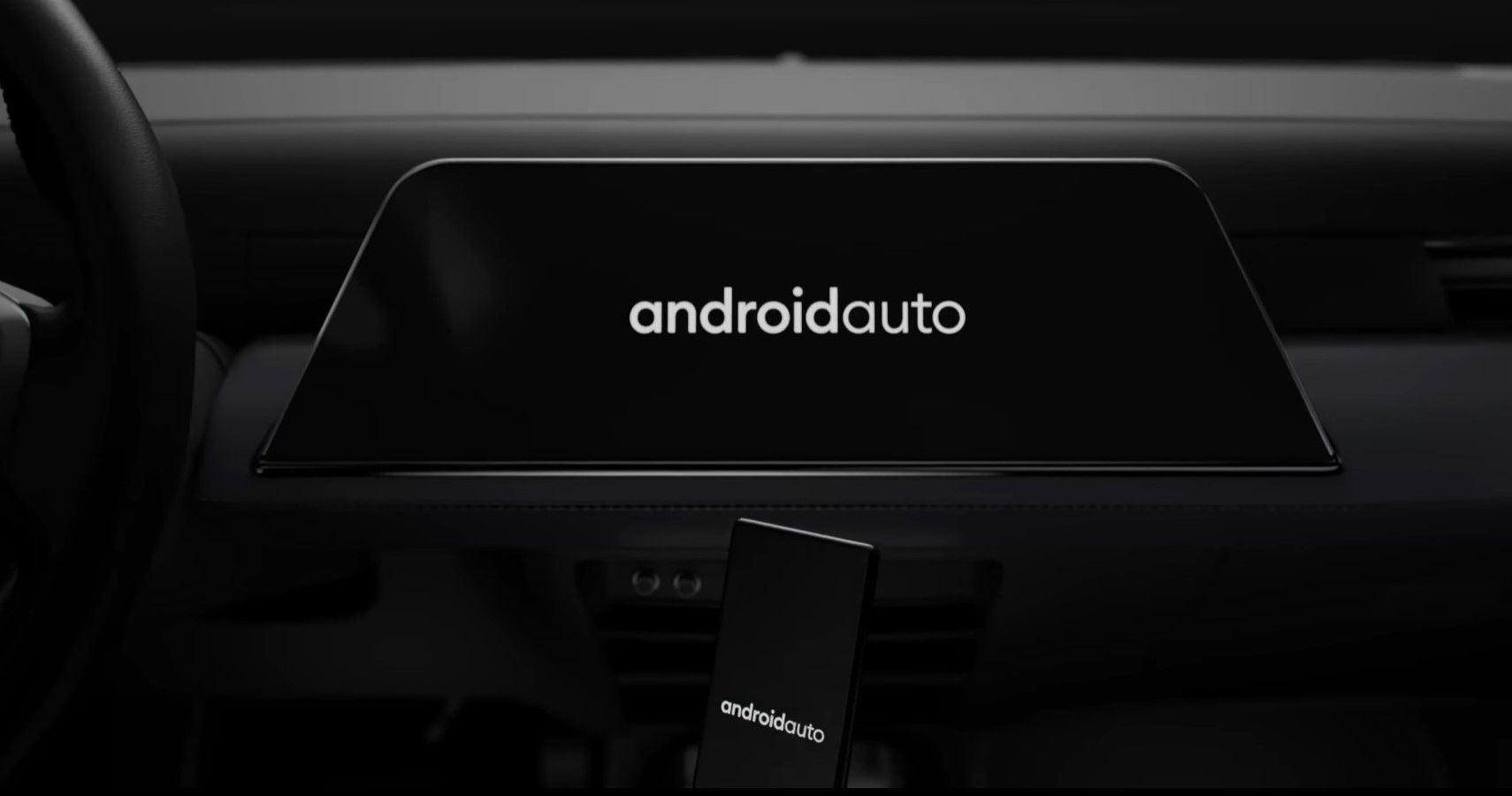Android Auto is getting a very intuitive upgrade, and it has got us stroked. The greatest challenge that Google faced with Android Auto was with adapting to the ever-increasing screen sizes in the car infotainment world. We currently have varying sizes of portrait and landscape-styled central displays, and the old Android Auto struggled to blend in.
But that changes with the latest overhaul which brings cards to the picture. The screen will now be split into smaller slots with the biggest one filled in by Maps (of course!). Google has also given an intelligent twist to the new Android Auto to interact and reply to text messages. In short, there are a lot fewer clicks and more swipes to get done with the new update.
Google is also pushing its Built-In Android Auto to help automakers extract all advantages of the flexible in-car entertainment (and now assistive) system. Automakers like Volvo, Polestar, and Honda will be the first to enjoy all the new Android Auto features.
A few major American automakers have also jumped in for the Google Built-In experience. We wouldn't say that the all-new Apple CarPlay gets its match, but Google with Android Auto is too far behind!
New Android Auto Gets A Fluidic New Card Interface
The most notable upgrade comes in the visual front in the form of a new card layout. Google has understood that people don't like to do a lot of clicks to reach the desired function or software in a car. And so, this car system puts everything that you need at a "swipe's" distance. In the unveil images, we see a split layout on the screen, with maps taking up most of the space and the other part being filled by the media player.
These two are the most used applications by users on the road. And Google has understandably positioned the maps closer to the driver to make glancing at it easy on the go. The "fluidic" part comes in with a better and optimized core software that helps Android Auto be buttery smooth. That means bye-bye jitters!
The new Android Auto expands the digital key-sharing capabilities. It was already a breeze to share your car's digital keys between Pixels and iPhones. But now, Google is making it easier for Samsung and Xiaomi also, to get these keys with no fuss. This feature is also getting integrated with more carmakers as well. As of now, it is BMW that supports these digital keys for cars.
Google Built-In For Car Gets Loads Of New Features
Just like how Google TV has its perks over Android TV (we still don't understand why there are two in the first place, though!), cars with built-in Google support enjoy extra features as opposed to ones that just utilize wired or wireless Android Auto. The most important bump comes in the form of high-quality maps and improved navigation.
Google now offers high-definition maps in nitpicked cars with Google built-in. The first of this lot includes the likes of the Polestar 3 and the Volvo EX90. This list is rapidly increasing, with cars like the 2023 Honda Accord also joining the list. These maps are future-ready and come with support for autonomous driving technology and assisted safety features.
Apart from these, the HD maps also provide more details like lane markers, road signs, and barriers. Google is also integrating the Waze app on many cars with Google built-in. Taking inspiration from how Tesla handles entertainment, Google has doubled down on entertainment with the new Android Auto.
In situations where the car is immobile, you can enjoy various streaming services on the infotainment screen. Tubi and MGM+ are already available, with YouTube and more coming soon. Other car companies to jump aboard the Google Built-In support system includes Chevrolet, GMC, Cadillac, and Renault.
Google's New Android Auto Is Like Water
Finally, Android Auto is now adaptive when it comes to displaying sizes. So no more awkward and stretched ratios or blank side or upper displays. And this adaptiveness is all because of the car system, which can realign as per the display size and orientation.
So, be it a vertically elongated display as seen in Tesla and now Polestar, or the sleek and stretched-out portrait ones that we have seen in Lexus cars, the new Android Auto will blend in like water in bottles! And in any given display size configuration, Maps manages to take up most of the display with other widgets filled in cleverly and intuitively in the remaining space.
Android Auto Gets A Lot Smarter
The new Android Auto is sensibly clever when on the road. It comes with a simplified version of notifications in the form of reminders. Strictly confined to calls, location updates, and suggestions, these are tiny cars that slide out from the top or bottom of the screens with a single-click function to them.
This is quite a cool feature and will greatly simplify how we communicate safely on the roads. This is an adaptive feature and will most likely change as per the message that you receive. And when things get complicated, there is always Google Assistant at your disposal.
Android Auto Is Playing Catch Up With CarPlay, For Now!
Apple also recently dropped their biggest ever upgrade of the CarPlay, and it has revolutionized the way we perceive in-car entertainment systems. Apple offers much deeper integration by taking over the instrument cluster and even certain car features beyond navigation and entertainment.
As compared to that, Google is taking baby steps, but it is going in an equally ambitious direction. Android Auto is playing catch-up for now. Or should we say, playing it safe?! Either way, we are really stroked on how these two in-car entertainment giants will shape the future of mobility.
Source: Google


